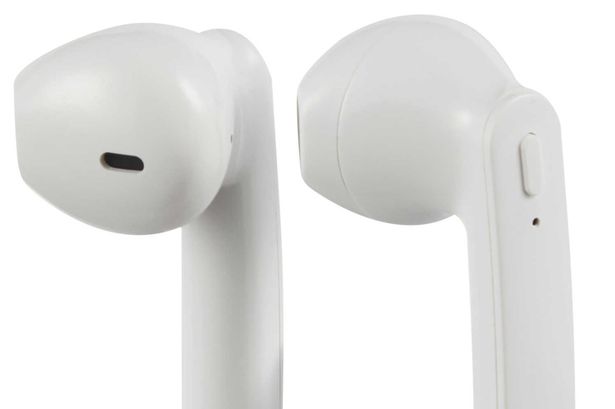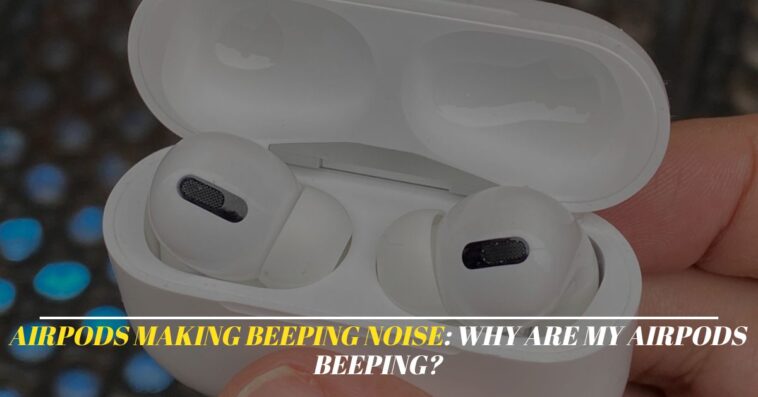Table of Contents
One of Apple’s most amazing creations is a pair of Airpods. Although the company is known for a variety of electronic goods, the Airpods continue to be a big seller. Airpods are cutting-edge products with superior audible features that are wireless hearing devices with a smart Bluetooth connection. Even so, it might eventually experience problems; one of them is a high-pitched sound that sounds like a beep.
The beeping sounds are not overly loud, but their intensity and pitch are annoying, and users will not want to put up with them if they can help it. These strange beeping noises, which can be annoying even when your music is on hold, require a quick fix to stop if you can still hear them.
Airpods Making Beeping Noise:

Fortunately, most issues can be resolved quickly, and if not, there are a few alternative solutions you can try. Here is our approach to fixing beeping problems with AirPods.
1. Poor Battery
The sound serves as a reminder to give the AirPods some rest so they can finish charging. When the charge hits 5% to 10%, it begins, and when it reaches 1%, the power-off chime turns them off. They then immediately turn on after you charge them. A low battery can cause the device to beep, alerting users to the situation and enabling continued use.
Even though there is no cause for concern if this problem is the cause, you should nonetheless consider this a warning sign. AirPods will turn off if you ignore the beeping and keep using them, which will just make you more irritated. There are times when the AirPods and the charging case are incompatible. This results in improper charging of the AirPods. As a result, they begin beeping to warn you of the danger.
2. Reset Your AirPods
Check if there are any improvements by resetting your AirPods. Tap Bluetooth in Settings and then on your AirPods. Choose to Forget This Device after that. Place your earbuds back inside the case, click the lid shut, and then wait 30 seconds before opening it. Once the LED starts to flash white, push and hold the setup button on the case. Place your AirPods close to your device and then pair the devices by following the on-screen instructions.
3. Successful And Unsuccessful Connection
If you are successful in pairing your AirPods with a device, you will hear a single beep rather than an ongoing series of beeps. This signals that the connection was established successfully. All of these scenarios correspond to common beeps that AirPods frequently make under particular circumstances, so you should be aware of them.
More than one beep could possibly mean that the air pods were unable to connect with the device you were attempting to link them to. Beeping noises might be caused by pairing problems. If that happens, you might hear beeping, so to resolve the problem, keep the AirPods in their case, take them out, and try to connect with a working Bluetooth device once more. The beeping stops after the device connects.
READ MORE: How To Change Wallpaper On Apple Watch?
4. Contact With Moisture
The true problem arises when the device is completely charged, but the beeping continues. Imagine you are running in a park, and it starts to rain. Or perhaps a water bottle was used to trick you by a sibling or friend. Both situations could result in moisture in the AirPods. Even though you might initially take pleasure in either of the circumstances, you will eventually have to “deal with consequences” when your AirPods begin to beep in an uncontrollable way.
If you discovered that your AirPods were beeping due to excessive moisture or if you accidentally got them wet, you must fully dry them out. After the AirPods have had a chance to dry, you should test them to see whether they make any beeping sounds. The AirPods will resume functioning normally without beeping if the system hasn’t been harmed and the trapped moisture has been successfully eliminated. Due to the heat sensitivity of Airpods, exposing the system to direct heat or using a blow dryer can potentially result in damaged Airpods. To allow the moisture absorbed by the absorbent to be totally evaporated, you might use rice or any other open area.
5. Issue with Internal Airpods
There is a circuit in the AirPods’ electronic system. AirPods beep when they encounter issues. Circuits typically begin to malfunction if they are dropped to the ground or if moisture enters inside. These are all the causes of your device’s annoying beeping noise.
Should You Get Your AirPods Replaced For a Faulty Beeping?

The one-year warranty period for Apple AirPods begins on the day of purchase. But keep in mind that if your AirPods were damaged by water or other harm caused by Apple’s unauthorized alteration, the company wouldn’t replace them. Only if the damage wasn’t brought on by an unauthorized alteration or water damage would Apple consider replacing your defective or beeping AirPods. Don’t rush to return an AirPod that is beeping. You can try a factory reset, even if one or both ears are beeping, to fix the issue. Consider contacting Apple to have them changed if a factory reset doesn’t work to solve them. If Apple doesn’t replace it, you’ll have to pay for one yourself.
READ MORE: PS5 Randomly Turning Off: How To Fix?






